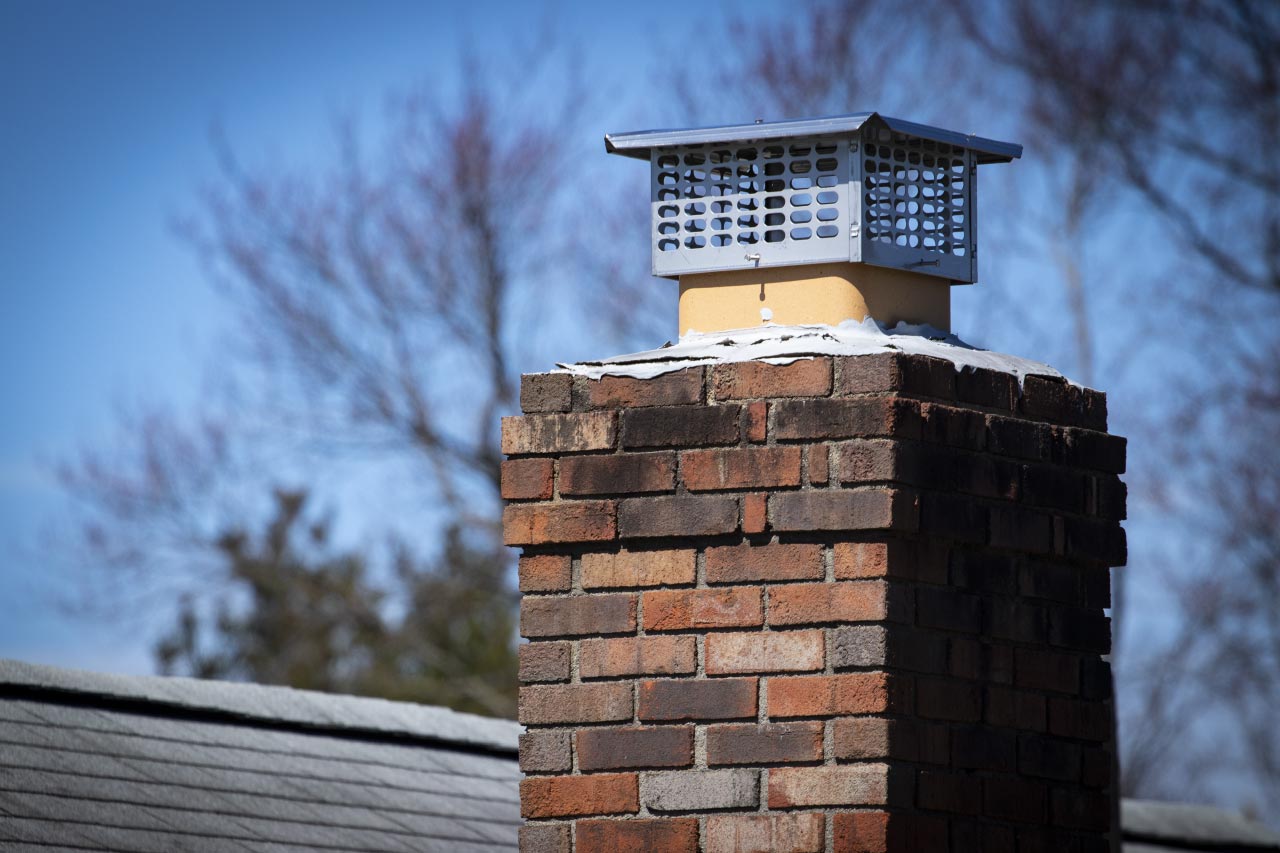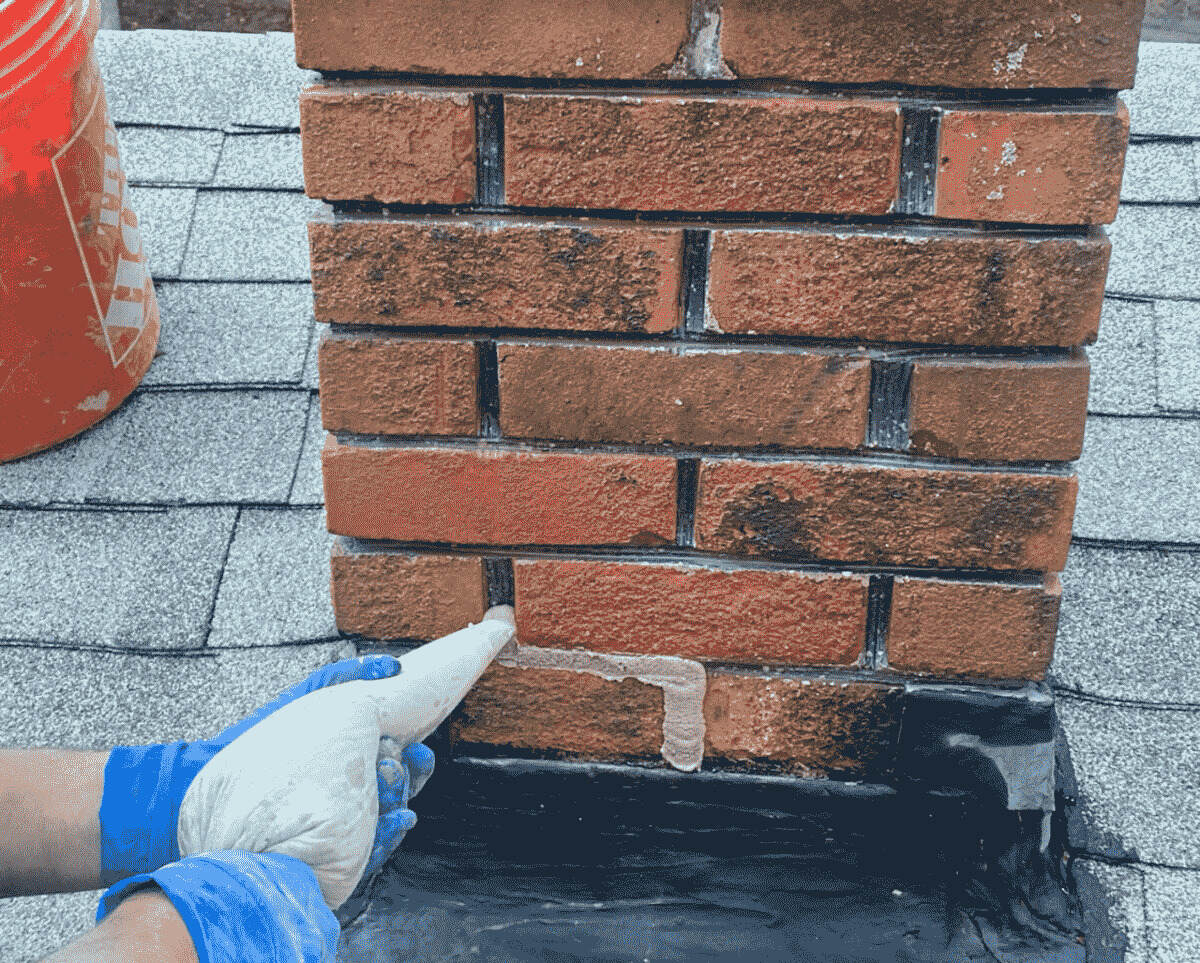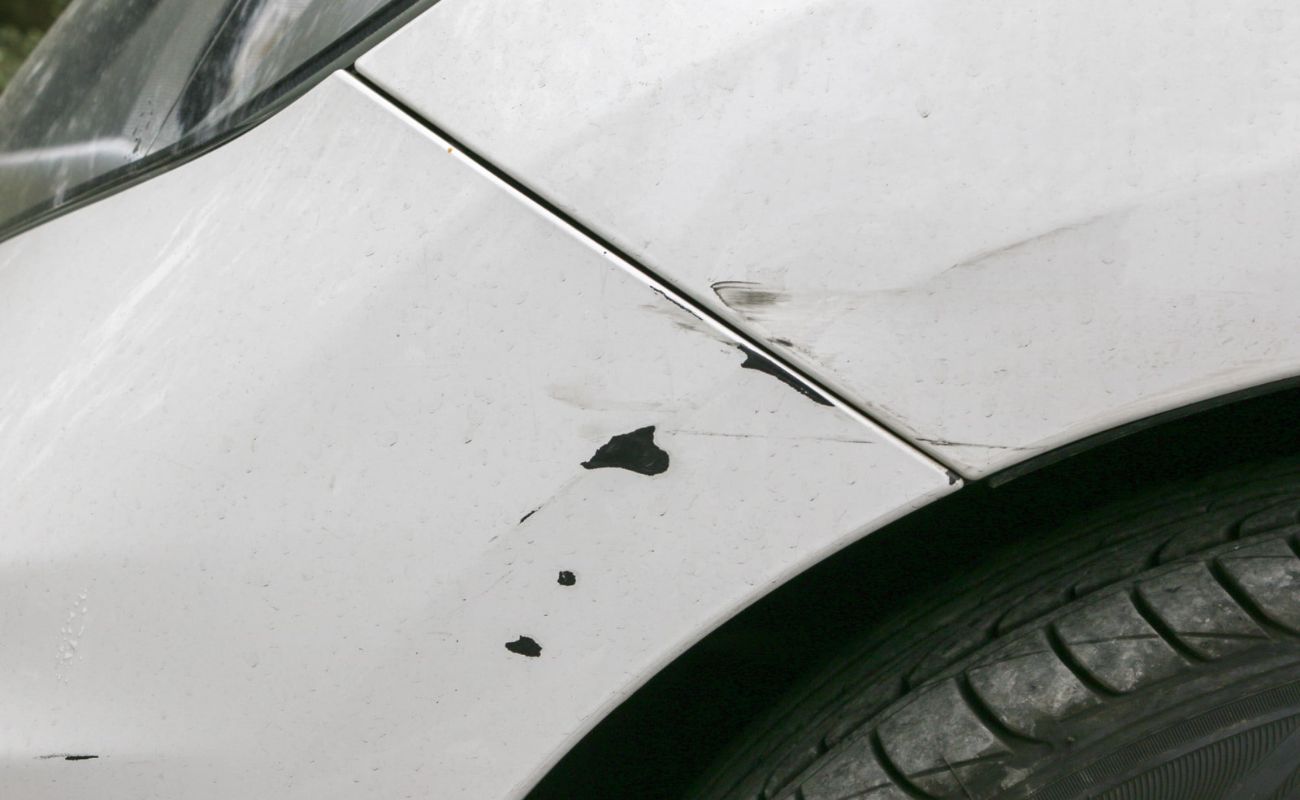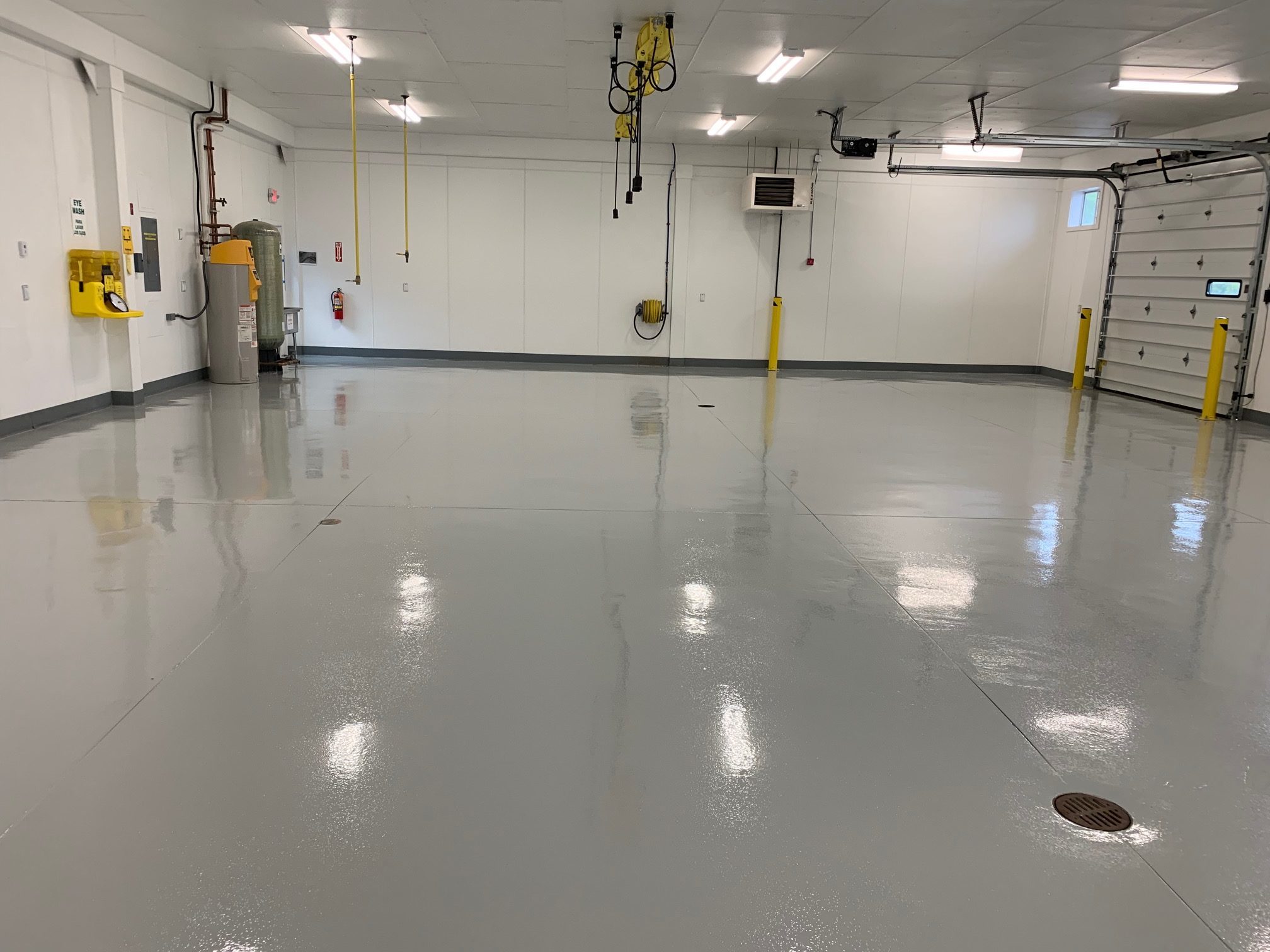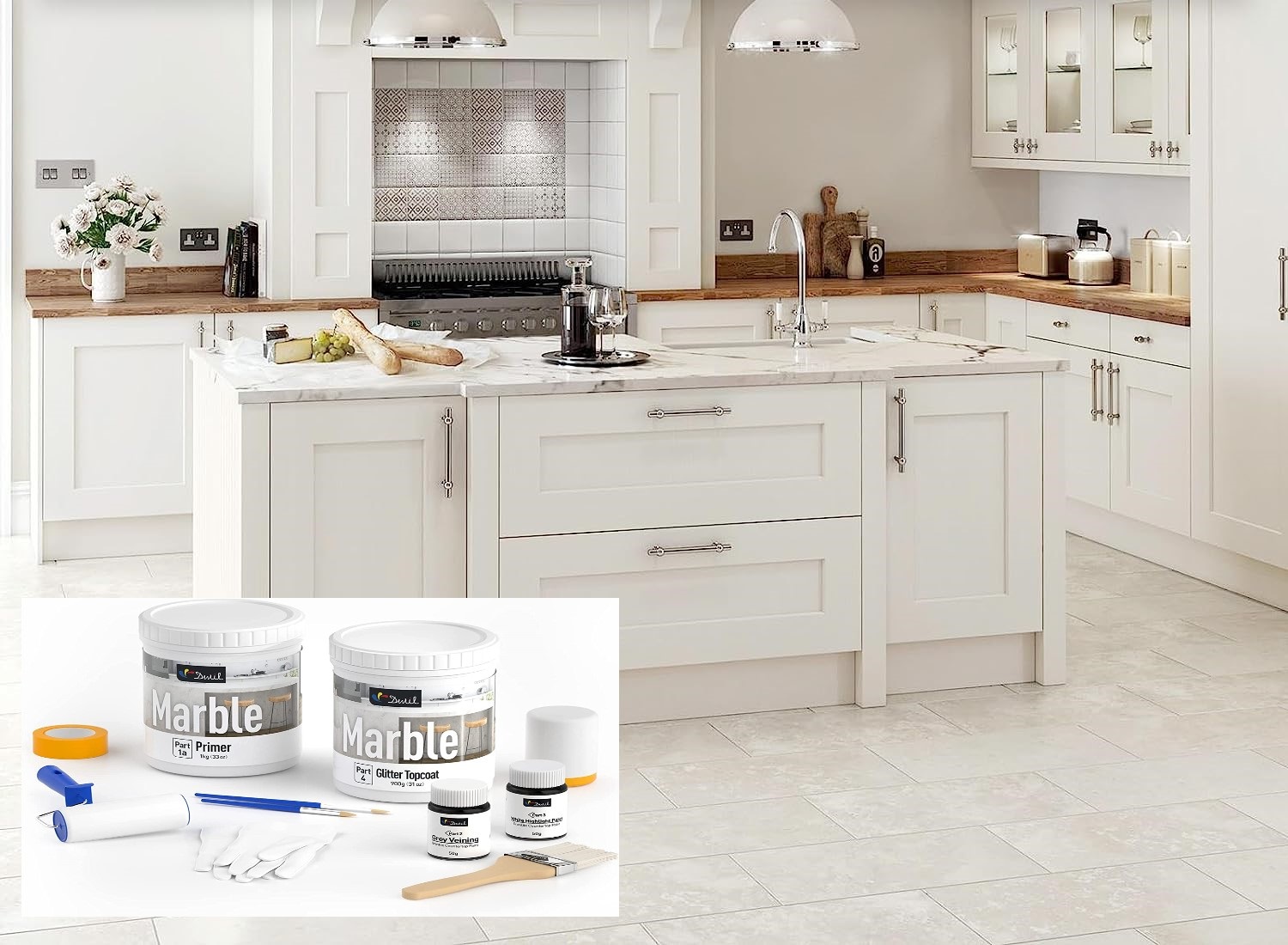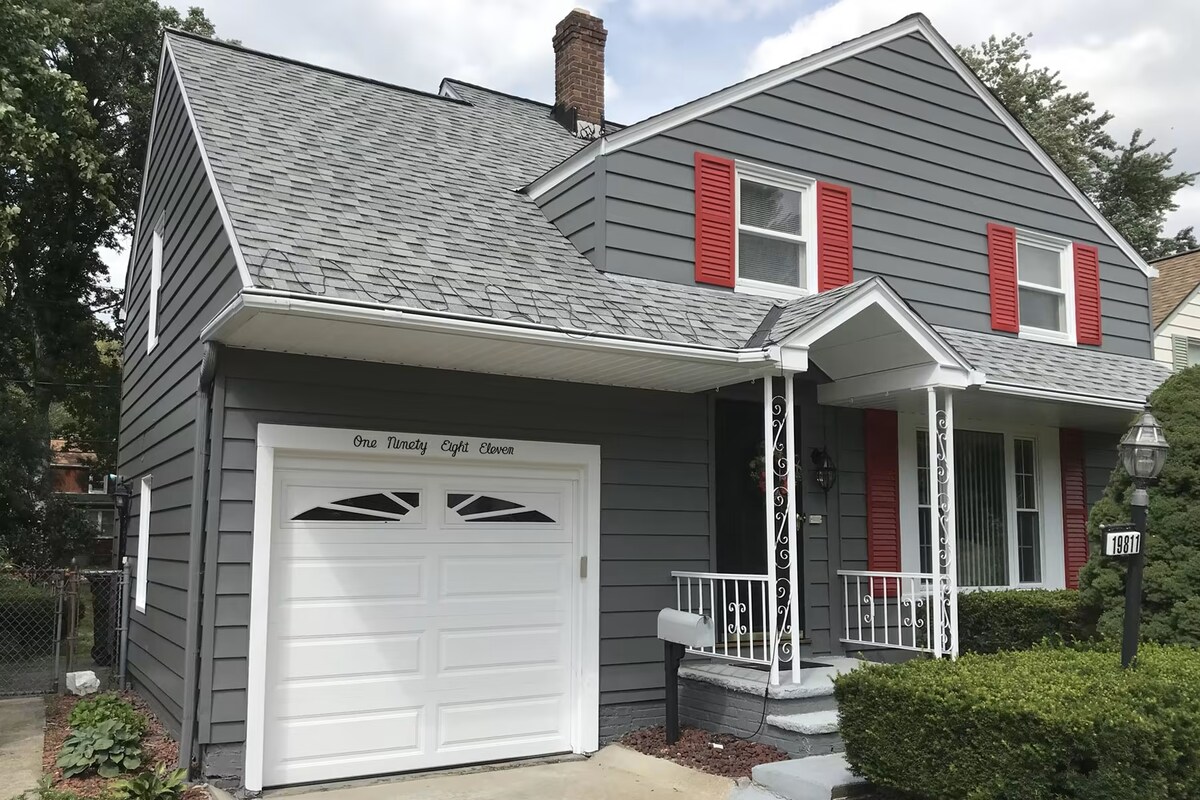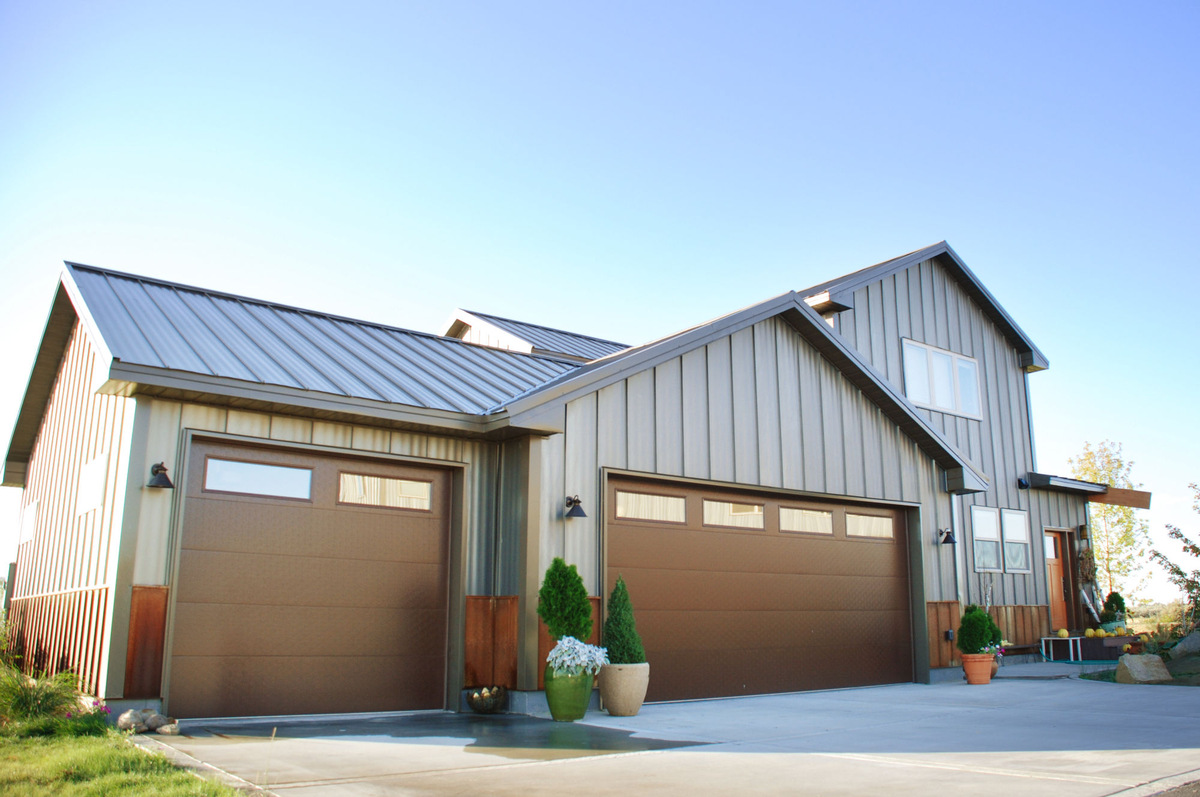Home>Home Maintenance>How Much Does Paint Repair Cost
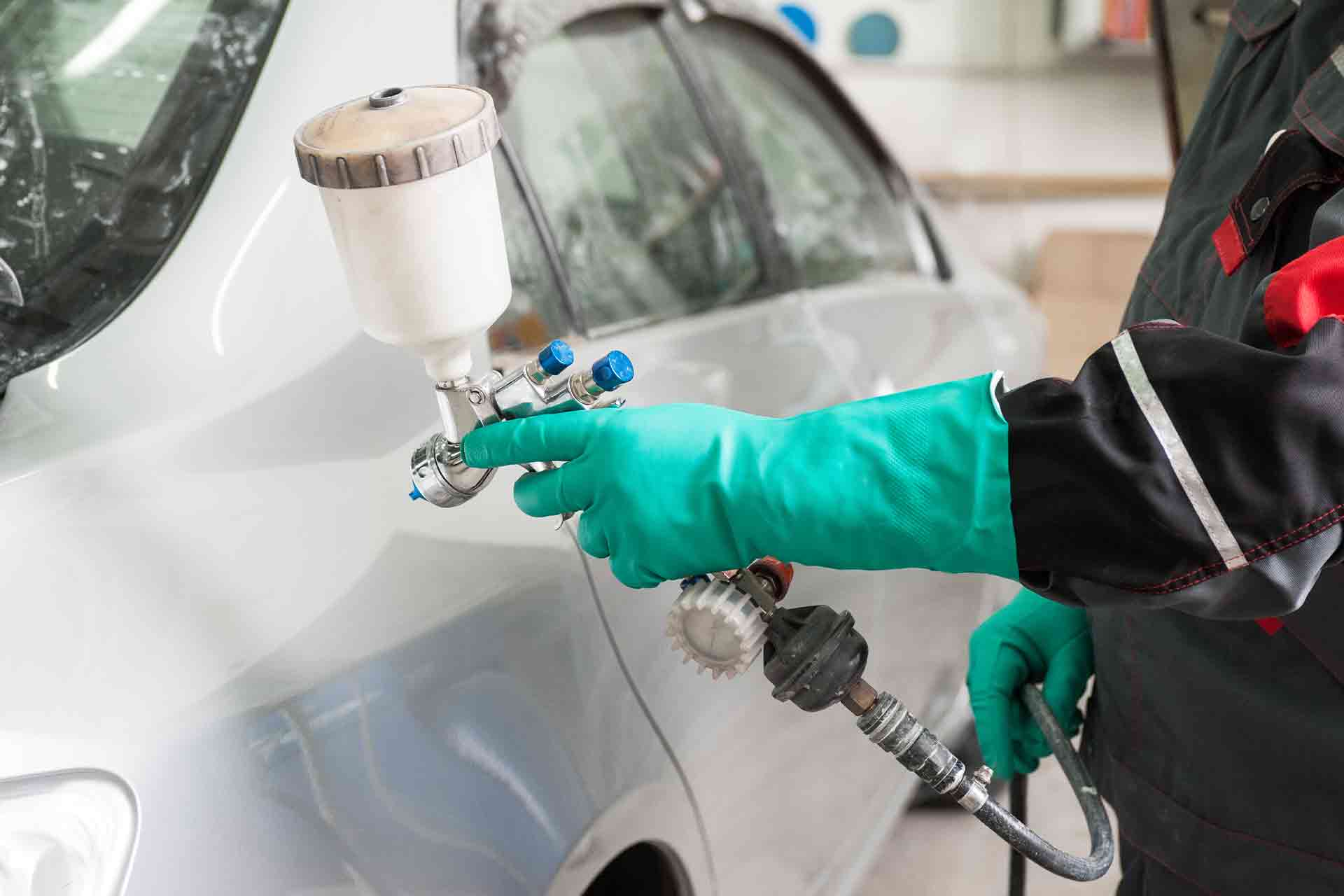

Home Maintenance
How Much Does Paint Repair Cost
Modified: March 6, 2024
Get an estimate for paint repair costs for your home maintenance needs. Find out how much it will cost to refresh the look of your walls and add value to your property.
(Many of the links in this article redirect to a specific reviewed product. Your purchase of these products through affiliate links helps to generate commission for Storables.com, at no extra cost. Learn more)
Introduction
Welcome to the world of home maintenance! Whether you’re a homeowner, renter, or just a DIY enthusiast, it’s important to understand the fundamentals of keeping your home in top shape. One critical aspect of home maintenance is paint repair. Over time, the exterior and interior walls of your home can become worn, chipped, or discolored, requiring a fresh coat of paint to restore their beauty and protect them from the elements.
Paint repair is not only important for the aesthetics of your home but also for its overall value. A well-maintained and visually appealing exterior can significantly enhance your home’s curb appeal and make a lasting impression on potential buyers. On the other hand, neglecting paint repair can result in further damage to the underlying surfaces, leading to more extensive and costly repairs down the line.
When it comes to paint repair, one question that often comes up is how much does it cost? The answer to this question depends on several factors, including the size of the area to be painted, the condition of the existing paint, the type of paint used, and whether you choose to do it yourself or hire a professional.
In this article, we will delve into the factors that affect paint repair costs, explore the pros and cons of DIY versus professional paint repair, provide average cost estimates for different vehicles, discuss additional factors that can influence paint repair costs, and share some tips for saving money on paint repair. By the end, you’ll have a deeper understanding of the costs involved in paint repair and be better prepared to tackle this essential home maintenance task.
Key Takeaways:
- Paint repair costs depend on factors like area size, paint type, and accessibility. DIY can save money, but professional help ensures expertise and time savings.
- Average paint repair costs for small cars range from $500 to $1,000, while SUVs and trucks may cost $1,000 to $1,500. Consider factors like damage type and paint color for accurate estimates.
Read more: How Much Does It Cost To Paint A Room?
Factors Affecting Paint Repair Costs
When it comes to paint repair costs, there are several key factors that come into play. Understanding these factors will help you estimate the potential expenses involved and make an informed decision about the best approach for your specific situation. Here are the primary factors that can impact paint repair costs:
- Size of the area: The size of the area to be painted is a significant factor in determining the cost. Naturally, larger areas will require more paint and more time to complete, resulting in higher costs. For example, painting the entire exterior of a house will be more expensive than touching up a small section of a wall.
- Preparation work: Before applying new paint, proper preparation is crucial. This can include tasks such as sanding, filling in cracks and holes, and priming the surface. The amount of preparation work required will vary depending on the condition of the existing paint. If there is extensive damage or multiple layers of old paint to remove, it will increase the labor and time involved, thus affecting the overall cost.
- Type of paint: The type of paint you choose will also impact the cost. There are various types of paint available, ranging from basic latex paint to high-quality, specialized paints. Higher-quality paints often come with a higher price tag, but they can offer better durability, longevity, and resistance to factors like fading and weathering.
- Number of coats: In some cases, multiple coats of paint may be necessary to achieve the desired result. This is especially true when covering up dark or heavily discolored surfaces. Each additional coat will increase the amount of paint required and add to the overall cost.
- Accessibility: The ease of access to the area being painted can also influence the cost. If the area is difficult to reach or requires special equipment, such as scaffolding, it may require more time and effort, which can result in higher labor charges.
It’s worth noting that these factors are not mutually exclusive but rather intersecting variables. The final cost will depend on the unique combination of circumstances in your specific paint repair project.
Now that we’ve explored the factors that affect paint repair costs, let’s delve into the pros and cons of DIY versus professional paint repair in the next section.
DIY vs Professional Paint Repair
When it comes to paint repair, one of the biggest decisions you’ll need to make is whether to tackle the project yourself or hire a professional. Both options have their own set of advantages and drawbacks, so let’s explore them to help you make an informed choice:
DIY Paint Repair
Many homeowners opt for the do-it-yourself approach to save money on labor costs. DIY paint repair can be a rewarding and cost-effective option, especially for smaller paint touch-ups or projects with a limited scope. Here are some benefits and considerations of DIY paint repair:
- Cost savings: By undertaking the paint repair yourself, you can avoid paying for professional labor. This can result in significant cost savings, particularly for those on a tight budget.
- Flexibility and convenience: With DIY paint repair, you have the freedom to work at your own pace and choose the most convenient time that fits your schedule. This can be advantageous for individuals with busy lifestyles or those who prefer a hands-on approach to home maintenance.
- Learning opportunity: Taking on a paint repair project yourself allows you to learn new skills and gain a sense of accomplishment. It can be a fulfilling experience to see the transformation of your home as a result of your own efforts.
However, there are potential drawbacks to consider with DIY paint repair:
- Time and effort: Painting can be a time-consuming task, especially if you have limited experience. It requires proper preparation, attention to detail, and a commitment to completing the project. Depending on the scope of the repair, it may take several days or even weeks to finish.
- Skill and expertise: Achieving a professional-quality finish may prove challenging without the right skills and knowledge. Uneven paint application, streaks, or brush marks can detract from the overall appearance and longevity of the paint job.
- Tools and materials: DIY paint repair requires investing in the necessary tools, brushes, rollers, and drop cloths, as well as purchasing the right type and quantity of paint. These costs should be factored into your overall budget.
Professional Paint Repair
If you prefer to leave the paint repair to the experts, hiring a professional painter can ensure a high-quality finish and save you time and effort. Here are the advantages and considerations of professional paint repair:
- Expertise and experience: Professional painters have the knowledge, skills, and experience to deliver exceptional results. They are well-versed in the proper techniques, tools, and materials for a flawless and long-lasting paint job.
- Time savings: Hiring professionals allows you to focus on other aspects of your life while they take care of the paint repair. They have the resources and the manpower to complete the project efficiently, often within a shorter timeframe than it would take for a DIY enthusiast.
- Professional-grade materials: Painters have access to high-quality paints and materials that may not be readily available to the average homeowner. This ensures a superior finish that is more resistant to wear, fading, and damage.
However, there are a few considerations when opting for professional paint repair:
- Cost: Hiring professionals will incur labor costs, which can significantly impact your budget. The price will vary depending on factors such as the size of the project, the complexity of the repair, and the region in which you live.
- Limited control: When you hire professionals, you might have limited input and control over the process. While reputable painters will work to meet your specifications, you may need to compromise on certain aspects to accommodate their methods or schedules.
Ultimately, the choice between DIY and professional paint repair depends on factors such as your budget, time availability, personal skills, and the scope of the project. Now that we have explored these options, in the next section, we will discuss the average cost of paint repair for different vehicles.
Read more: How Much Does It Cost For A Chimney Sweep
Average Cost of Paint Repair for Different Vehicles
When it comes to paint repair, the cost can vary depending on the type and size of the vehicle. Whether you have a small car, a truck, or an SUV, the extent of the damage and the specific paint color can also affect the overall cost. Here are some average cost estimates for paint repair on different vehicles:
Small Cars:
For small cars, such as compact sedans or hatchbacks, the average cost of paint repair ranges from $500 to $1,000. This estimate typically covers basic touch-ups or localized repairs. However, if there is extensive damage or the entire exterior needs repainting, the cost can increase to $1,000 to $3,000 or more.
Mid-Sized Sedans:
Mid-sized sedans, like popular models such as Honda Accord or Toyota Camry, generally require a bit more paint and labor due to their larger size. Paint repair for a mid-sized sedan can range from $800 to $1,500 for minor touch-ups, while a complete repaint may cost between $1,500 and $3,500.
SUVs and Trucks:
For SUVs and trucks, the larger surface area and higher paint volume can contribute to higher paint repair costs. The average cost for touch-up paint repair on an SUV or truck can be around $1,000 to $1,500, while a complete repaint can range from $2,000 to $5,000 or more, depending on the specific model and paint color.
It’s important to note that these cost estimates are just averages, and the actual cost can vary depending on factors such as the severity of the damage, the quality of paint used, and the location of the repair shop. Additionally, luxury or high-end vehicles may incur higher paint repair costs due to the use of specialized paints and finishes.
Now that you have an idea of the average costs for paint repair on different vehicles, let’s explore some additional factors that can potentially influence paint repair costs in the next section.
Read more: How Much Does It Cost To Clean A Chimney
Additional Factors that Affect Paint Repair Costs
While the size of the area, the type of vehicle, and the extent of damage are major factors that impact paint repair costs, there are several additional factors that can also influence the final price. These factors can contribute to variations in costs between different paint repair projects. Let’s take a closer look at these additional factors:
Type of Damage:
The type of damage to the paint can affect the complexity and cost of the repair. Simple scratches or minor dings can often be fixed with touch-up paint, which is relatively economical. However, deep scratches, dents, or areas where paint has peeled off completely may require more extensive repair work, including filling, sanding, and blending the repaired area with the surrounding paint. This type of repair can be more time-consuming and therefore more expensive.
Paint Color:
The color of the paint can also influence the cost of paint repair. Some colors, such as metallic or pearl finishes, can be more challenging to match and blend seamlessly. This can require additional expertise and time from the paint technician, resulting in a higher cost. Similarly, rare or custom paint colors may require special ordering or mixing, which can also increase the price of the repair.
Location and Labor Costs:
The geographic location of the repair shop can impact paint repair costs. Areas with a higher cost of living or where there is greater demand for paint repair services tend to have higher labor rates. For example, urban areas or regions with a higher concentration of luxury vehicles may have higher prices for paint repairs compared to rural or less populated areas.
Read more: How Much Does It Cost To Replace A Chimney
Additional Repairs or Services:
During the paint repair process, additional repairs or services may be necessary. For instance, if the paint damage extends to the bodywork or underlying panels, these areas may need to be repaired before painting. Additionally, some shops may offer additional services such as paint protection coatings, clear coat refinishing, or special detailing, which can add to the total cost of the paint repair.
Warranty or Guarantee:
Some paint repair shops may offer warranties or guarantees on their work. This can provide peace of mind knowing that any issues with the paint repair will be resolved without incurring additional costs. However, shops that offer extended warranties or higher quality finishes may charge a premium price for their services.
It’s essential to discuss these additional factors with your chosen paint repair shop to ensure you have a clear understanding of the total cost and any potential extra charges. By accounting for these factors, you can better estimate the final expenses and make an informed decision about your paint repair project.
Now that we’ve covered the various factors that can affect paint repair costs, let’s explore some tips for saving money on paint repair in the next section.
Tips for Saving Money on Paint Repair
Paint repair doesn’t have to break the bank. With a little planning and smart decision-making, you can save money on your paint repair project without compromising on quality. Here are some tips to help you keep the costs down:
Get Multiple Quotes:
Before committing to a paint repair shop, obtain multiple quotes from different providers. This allows you to compare prices and services to find the most competitive option without sacrificing quality. Keep in mind that the cheapest quote isn’t always the best choice. Consider the reputation, experience, and customer reviews of each shop to ensure you’re getting value for your money.
Read more: How Much Does Chimney Inspection Cost
Consider Partial Repairs:
If the damage is limited to a specific area or panel, consider opting for partial repairs instead of repainting the entire vehicle. This can significantly reduce costs since you’ll only need to focus on specific touch-ups rather than a complete paint job.
DIY Preparation:
If you are comfortable with DIY work, you can save money by handling the preparation work yourself. This includes tasks such as cleaning the surface, sanding, and masking off areas that don’t require painting. By doing these steps on your own, you can minimize labor fees and ensure the paint repair shop can focus solely on the actual painting process.
Choose Standard Paint Colors:
Opting for standard or popular paint colors can save you money on paint repair. Custom or rare colors often require special ordering and may come with a premium price tag. By sticking to standard colors, you can avoid any additional charges associated with finding or matching the specific paint color.
Consider Paintless Dent Repair:
If your vehicle has minor dents or dings without damage to the paint, you may be able to save money through paintless dent repair (PDR). PDR techniques involve manipulating the metal from behind to remove dents without repainting. This approach can be a cost-effective alternative for small to medium dents.
Read more: How Much Does Plumbing Cost?
Maintain Regular Cleaning and Maintenance:
Regularly cleaning and maintaining your vehicle can help prevent or minimize paint damage. By keeping the surfaces clean, applying wax or sealant for protection, and addressing scratches or chips promptly, you can avoid more substantial and costly paint repair in the future.
Ask about Discounts or Promotions:
Don’t hesitate to ask the paint repair shop if they offer any discounts or promotions. Some shops may have special offers for first-time customers, referrals, or seasonal discounts that can help you save money on your repair. It’s worth inquiring to see if you can take advantage of any available cost-saving opportunities.
Remember, while saving money is important, it’s equally crucial to prioritize quality and craftsmanship. Always choose a reputable paint repair shop that uses high-quality materials and offers a warranty or guarantee for their work. This ensures that you get a long-lasting and high-quality paint repair that will stand the test of time.
Now that we’ve explored some money-saving tips, let’s wrap up our discussion in the next section.
Conclusion
Paint repair is an essential aspect of home maintenance that can enhance the beauty and value of your property. Whether you choose to do it yourself or hire a professional, understanding the factors that affect paint repair costs is crucial in making informed decisions.
The size of the area, the extent of damage, the type of vehicle, and the quality of paint all play a role in determining the cost of paint repair. Additional factors such as the type of damage, paint color, location, and additional repairs or services can also influence the final price. By considering these factors, you can estimate the expenses and plan accordingly.
When it comes to paint repair, you have the option of tackling the project yourself or hiring a professional. DIY paint repair can save you money, but it requires time, effort, and skill. Professional paint repair offers expertise, convenience, and superior results, but it comes at a higher cost. It’s important to weigh the pros and cons and choose the option that best fits your needs and budget.
The average cost of paint repair varies depending on the size of the vehicle. Small cars can range from $500 to $1,000 for minor touch-ups, while SUVs and trucks may cost more, averaging between $1,000 and $1,500. However, these are just average estimates, and factors such as damage severity, paint color, and labor costs can influence the final price.
By considering additional factors such as type of damage, paint color, location, and warranties, you can better understand the potential costs involved in paint repair. Moreover, implementing money-saving tips, such as obtaining multiple quotes, considering partial repairs, and DIY preparation, can help you save money without compromising quality.
Ultimately, the decision to invest in paint repair is a wise one as it not only restores the appearance of your home or vehicle but also protects it from the elements and preserves its value. Whether you choose to do-it-yourself or enlist the help of professionals, proper paint repair is an investment that can pay off in the long run.
So take the time to assess your paint repair needs, consider your options, and make an informed decision. With the right approach, you can achieve a beautifully painted surface that will bring renewed vitality to your home or vehicle.
Frequently Asked Questions about How Much Does Paint Repair Cost
Was this page helpful?
At Storables.com, we guarantee accurate and reliable information. Our content, validated by Expert Board Contributors, is crafted following stringent Editorial Policies. We're committed to providing you with well-researched, expert-backed insights for all your informational needs.
